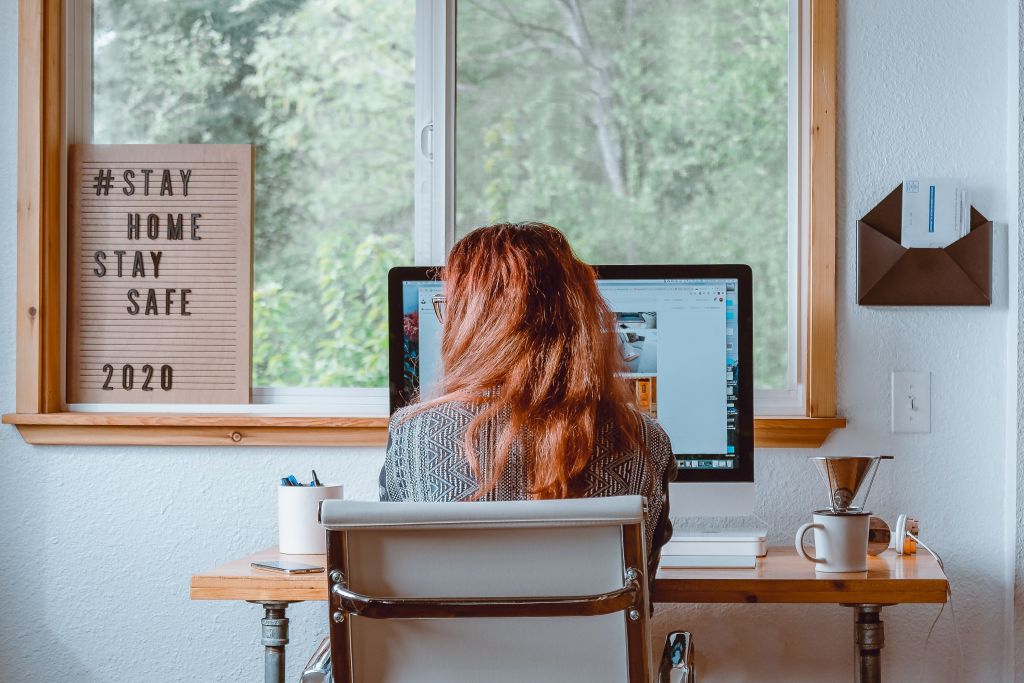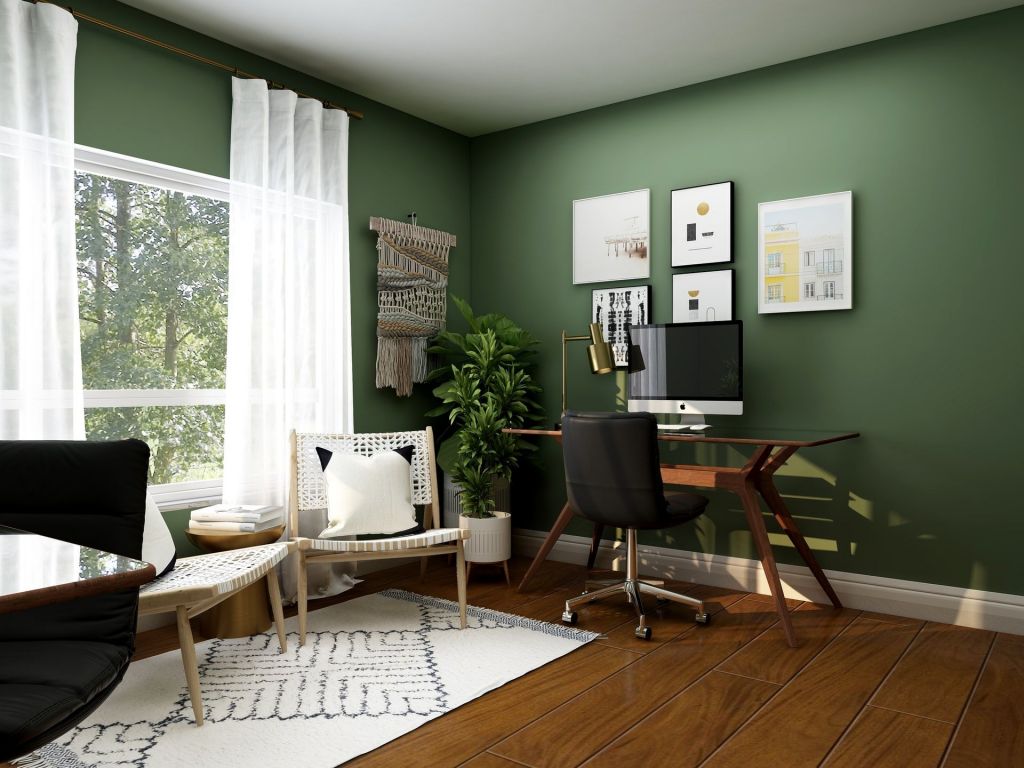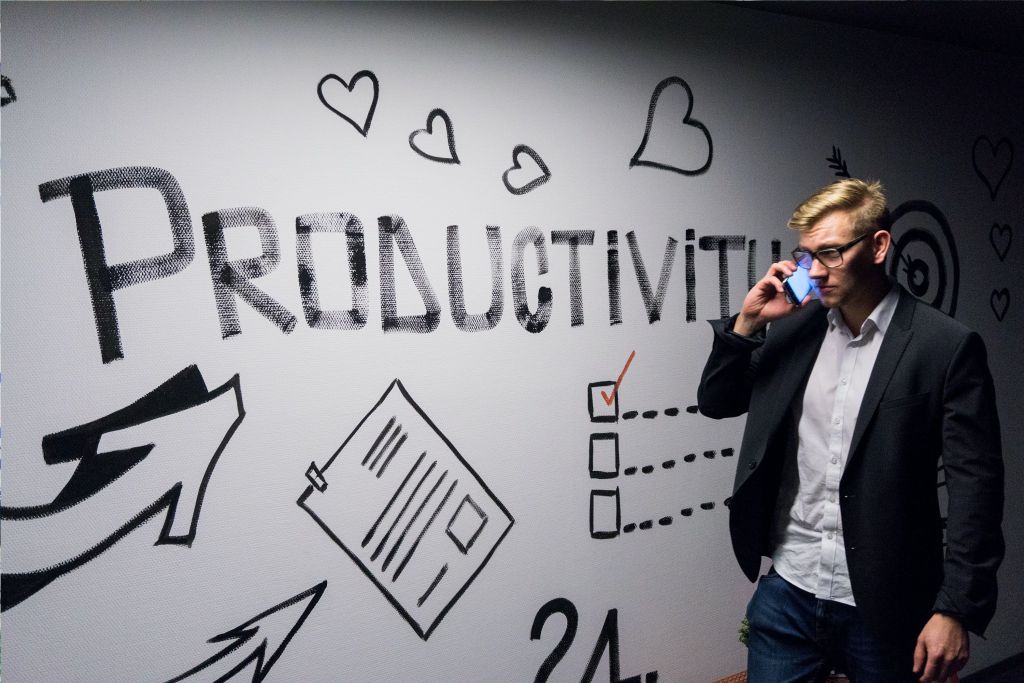Even if the restrictions related to Covid-19 should gradually disappear in the coming weeks and months: Home office will remain a popular type of office work in the future – albeit perhaps in a reduced form. Employers appreciate the lower costs because they can reduce office space and employees benefit from more freedom and reduced travel times.

Photo by Tina Witherspoon on Unsplash
According to a new study by Deloitte, 28 % of Swiss people already work from home at least half a day a week. This proportion is likely to increase further in the coming years – in total, around half of the 4.9 million employees in Switzerland could work on the move or from home. Of the 72 % of respondents who do not yet work from home, 29 % would like to use this option. Of the 28 % who already work from home at least half a day a week, 85 % would like to maintain or even expand this.
We at WüstundWüst magazine have therefore taken a look at what it takes to be able to work efficiently at home.
The best residential locations for home offices
If you want to know which Swiss communities are best suited for home offices, we recommend a study by IAZI. It says: “The Corona pandemic has changed everyone’s behaviour and housing demands. These Corona-related behavioural changes have also changed housing needs. Quality of housing, individual means of transport, proximity to green spaces and especially the size of the flat are at the centre. The additional need for an office space in the flat is likely to reinforce this trend in the future.” According to IAZI, the following municipalities are top locations for living in the “new normal”: 1. Männedorf (ZH). 2. Erlenbach (ZH), 3. Hergiswil (NW), 4. Beckenried (NW), 5. Stans (NW), 6. Uitikon (ZH), 7. Ennetbaden (AG), 8. Ennetbürgen (NW), 9. Kilchberg (ZH) and 10. Zug (ZG).
And here you can find the top 5 municipalities per canton on an interactive map:

In order to do justice to the “New Normal”, IAZI has calculated a “Municipal Classification in Corona Times”. Based on the changing needs during the pandemic, such as more living space or more recreational facilities and green spaces and lower settlement density, there are 5 top municipalities per canton.
Read the full article on this topic in our earlier post Owner-occupied homes remain in demand or directly at IAZI in the post Wohnen und Arbeiten in Corona-Zeiten: Zwei Szenario-Analysen.
You should have these devices and software

Photo by Andrew Neel on Unsplash
But what do you need in technical terms for efficient work at home and what software is actually available? A good overview of this topic is provided by an online article from wlw business inside, the most visited internet platform for professional purchasing. In this article, you will find advice on technical equipment, possible tools for project management, suitable tools for online meetings as well as the workspace.
Technical equipment
When it comes to technical equipment – according to wlw – the focus should be on performance, not on the lowest possible purchase price. Poor technical equipment does not save anything, but only costs nerves and hurts the work force. The most important thing is fast, password-protected internet access. A virtual private network (VPN) provides even more security.
A well-equipped home office has
- a fast, stable and secure internet connection with WPA/WPA2 password protection (if required via a VPN for higher data security)
- a large, high-quality and up-to-date screen
- a very good, ergonomic keyboard
- a stable telephone connection (landline or mobile). If you often take part in video conferences, you should also buy a headset with headphones and microphone.
Project management tools
With a functioning project management tool, you create a solid foundation for virtual collaboration for yourself and your team. In addition to expensive, very professional tools that are mostly used by large companies, there are now also a number of free software offerings that are quite useful for smaller teams.
wlw recommends, for example, Asana (task management and collaborative project management), Bitrix24 (project management plus team chat, video conference, calendar, etc.), GanttProject (project management as a desktop solution, without cloud), Meistertask (agile project management for an unlimited number of participants, with its own IOS app) or OpenProject (project management with Scrum plug-in, incl. milestone planning, bug tracking, etc.).
Tools for online meetings
For many who need or want to work at home, online meeting tools have become indispensable for communication. Useful solutions for distributed teams are often offered by chat services such as Slack, which allow file sharing. Freely available video conferencing solutions with group chats are available via Skype for Business, Google Hangouts and Zoom, for example. Many users also like to use the meeting-solution Team from Microsoft.
By the way: When video conferencing, pay attention to the background. It should look tidy and convey a good working atmosphere; we advise against using virtual backgrounds (Caribbean sunsets and the like). For frequent conferences, use a good camera and a headset with good headphones and microphone.
How to set up your home office optimally

Photo by Collov Home Design on Unsplash
People who often work at home need peace and quiet and some privacy. That is why practically all experts recommend setting up a workplace in a separate room whenever possible. Swisscom writes in its guidebook “So richten Sie das Homeoffice optimal ein”: “A proper office with a lockable door ensures peace and quiet and creates the necessary working atmosphere – without distractions from outside. In addition, the office creates the psychological effect that you don’t just go into another room, but actually “go to work”. This also allows you to switch off better after work by leaving the office again and going “home”.”
Crucial to a successful home office, however, is how your office is set up. So before you simply settle down where you used to do some administrative work on your computer or laptop at home, we recommend reading the fact sheet “Help, tips and tricks for the home office in times of pandemic” from the State Secretariat for Economic Affairs SECO, which you can download as a PDF here (in german language only).
In this leaflet, SECO recommends, among other things:
- set up a separate room or a fixed place for VDU work. If possible, this should be located away from the rest of the living space, ideally in a separate office. It should also have natural light and a desk lamp and be well ventilated.
- position the furniture ergonomically. The desk and monitor should be at a right angle to the light source (window) and not directly in front of it.
- an adjustable office chair or other comfortable chair with a backrest and high enough for the elbows to be level with the work surface.
- position the screen straight in front of you. The top of the screen should be at eye level so that the head is slightly tilted forward.
- move frequently and do some exercises from time to time. Those who can should also work standing up or walk around a bit while talking on the phone.
- set realistic working hours, stay in contact with colleagues and talk to them regularly.
SUVA also offers good advice on ergonomics at the workplace, e.g. with this online leaflet.
Legal protection
Many legal questions in connection with home office have not yet been conclusively clarified. Nevertheless, there are legal framework conditions that must be observed with this form of work. As the brochure “Working at home – Home office”, published by the State Secretariat for Economic Affairs SECO, states, “Home office means a high degree of personal responsibility for employees, as professional activities are carried out in private surroundings. The employer is not released from his obligation to ensure the health protection of employees and to implement appropriate measures. The employer’s responsibility relates to all work-related factors that have an impact on the health of employees”. SECO bases these statements on Article 6 paragraph 1-3 of the Labour Act and Article 2 paragraph 1 of the Ordinance 3 to the Labour Act. You can download the SECO brochure as a PDF here (in German only).
SECO also writes: “There is no legal entitlement to work from home. If the employer grants this form of work, a note should be made in the employment contract or in a separate regulation as an integral part of the employment contract under Place of work. This note should state that employees are permitted to work from home. »
SECO also recommends that a separate set of regulations should specify
- how high the proportion of home office work should be
- how and when employees must be reachable
- how working time is to be recorded
- how night and Sunday working time is regulated
- how the workplace at home should or must be set up
- what equipment must be available and what compensation, if any, is provided for it
- how employees should behave in the event of disruptions (e.g. power failure)
- how to deal with sensitive data and liability.
WEKA also offers further information on this topic in its online article “Home-Office: Rechtliche Tücken bei Homeoffice-Arbeit”.
Und so strukturieren Sie Ihren Tag

Photo by Andreas Klassen on Unsplash
The University of Zurich has also recently dealt with this topic in detail and provided its home office employees with many useful tips. You can find them under this link.
Among other things, it says: “Structure your working day and coordinate your work processes with your colleagues as well as with your flatmates and family.
- Ensure accessibility: In consultation with your superiors, ensure that you are available during office hours. Plan the usual breaks between work blocks during the course of the working day.
- Sign out when not available: Log out – as usual – to your superiors and the team if you are not available during your working hours.
- Do not communicate only by e-mail: Do not communicate exclusively via e-mail with your customers, colleagues and superiors. Make a phone call or arrange a team meeting or a Zoom meeting.
- Really “call it a day”: Make sure you really call it a day by shutting down your computer and packing up your “office” if it is not set up in a separate study.
According to a post by Swisscom, the danger of procrastination and numerous distractions lurks in the home office. With these little tips, you can increase your motivation in the morning:
- Get up as early as usual. This will help you maintain your regular rhythm.
- Get dressed – this may sound banal, but we associate clothes with certain activities. And pyjamas and work don’t go well together.
- Keep moving. You can also find tips on this in the ZAHW article entitled “Exercise in the home office” or from the ASVZ “Various sports videos on YouTube”.
- Deliberately plan breaks. Go out into the fresh air for a few minutes, have a coffee in another room, etc.
- Plan your day and structure it. Make sure that you don’t get caught up with work after work.
- In short, start your working day at home as you would if you went to the company office.


